Ecology & Zoology
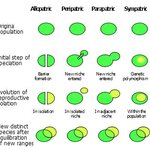
If you set out to answer questions about species diversity, there are two questions you need to consider - how is diversity generated, and how is diversity maintained?
The simplest measure of diversity (and the one I am interested in here) is "species richness" - put simply, the number of species in a given area. In a closed system, the only thing that can increase the number of species in an area is the split of an existing lineage into more than one daughter lineage. So how does that happen?
The most commonly invoked models of speciation are allopatric and sympatric speciation.…
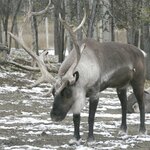
One night each year, tiny magic reindeer pull Santa and his toy-filled sleigh around the world. Their names are Dasher, Dancer, Prancer, Vixen, Comet, Cupid, Donner, Blitzen and maybe Rudolph (or Robbie, if you're under the age of 30 - editors), and flying reinder are an impressive feat, especially on a site with some very cranky physicists who take that sort of thing literally.
But what about the non-magical reindeer that don't fly, don't have cool names and who spend each day moving throughout the Alaskan and Canadian tundra hanging out with caribou rather than elves? Don't they deserve…

If you set out to answer questions about species diversity, there are two questions you need to consider - how is diversity generated, and how is diversity maintained?
The simplest measure of diversity (and the one I am interested in here) is "species richness" - put simply, the number of species in a given area.
This figure from the Wikipedia article on speciation summarises the different modes of speciation.

In my recent post on Mexican dry forest, I mentioned the fact that about 80% of the species in the genus Bursera were endemic to Mexico. Things like that tend to jump out at you. Why are there so many species in one area, relative to the rest of its range?
When you find an area which has a lot of species belonging to the same genus, there are two simple explanations - either this is the place where the genus diversified, and only a few species have expanded beyond this "centre of origin" or this is a place where there was secondary diversification. So how do you tell the…

As a former dog owner and dog lover, I was not really surprised by last week's report that dogs have been found to "sense inequity", a.k.a. be jealous of the dog that's being treated better than they are.
Scientists did a very simple experiment- they asked two side-by-side dogs to perform a trick, then only rewarded one of the dogs with a treat. Who wouldn't be jealous of that? Eventually the non-rewarded dogs stopped doing the trick (smart dogs!).
The cool thing is that this is the first time this has been seen in non-primates. I would expect that if we looked…
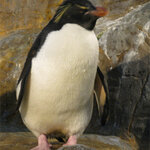
Last weekend I visited the St. Louis Zoo to witness their first ever Penguin Walk.
One thing I will definitely miss about the St. Louis Zoo is their penguin and puffin display. When visiting, you walk through sliding doors into a cooled building and find yourself inches away from the birds, separated by only a chest-high fence of plexi-glass. The birds are swimming right in front of you and, if you are not watchful, will poop on you. Penguins are projectile poopers, and once my Sister and I were bombarded by a Rockhopper penguin perched on a high ledge above us.
The birds…
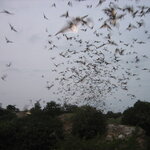
Annemarie Surlykke from the University of Southern Denmark is fascinated by echolocation. She really wants to know how it works. Surlykke equates the ultrasound cries that bats use for echolocation with the beam of light from a torch: you won't see much with the light from a small bulb but you could see several hundred metres with a powerful beam.
Surlykke explains that it's the same with echolocating bats. Some have big powerful calls for perception over a long range, while others are said to whisper; which puzzled Surlykke. How could 'whispering' bats echolocate with puny 70decibel cries…
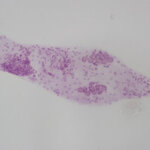
Sometimes while doing science, one is struck by something in the same way that one is affected by beautiful art.
Not that these are the most amazing images ever (they weren't meant to be artistic, just routine work), but I enjoyed them. They're from a project on rotifers by one of my undergraduate thesis students. They're both of Adineta vaga: the first is of the whole animal (the pink spots are the DNA), the second is the musculature on a confocal laser microscope. (Photos by K. Ashforth).
Bonus:
Here are some pictures I took several years ago. A is an ovariole from the ovary of a vinegar…

The wild pea pod is big and heavy, with seemingly little prayer of escaping the shade of its parent plant.
And yet, like a grounded teenager who knows where the car keys are hidden, it manages – if it has a reasonable chance of escape.
University of Florida researchers working at the world's largest experimental landscape devoted to wildlife corridors – greenways that link woods or other natural areas — have discovered the pea and similar species share, given a clear shot, a mysterious ability for mobility. Though their seeds are neither dispersed by birds nor borne by the wind, they are…